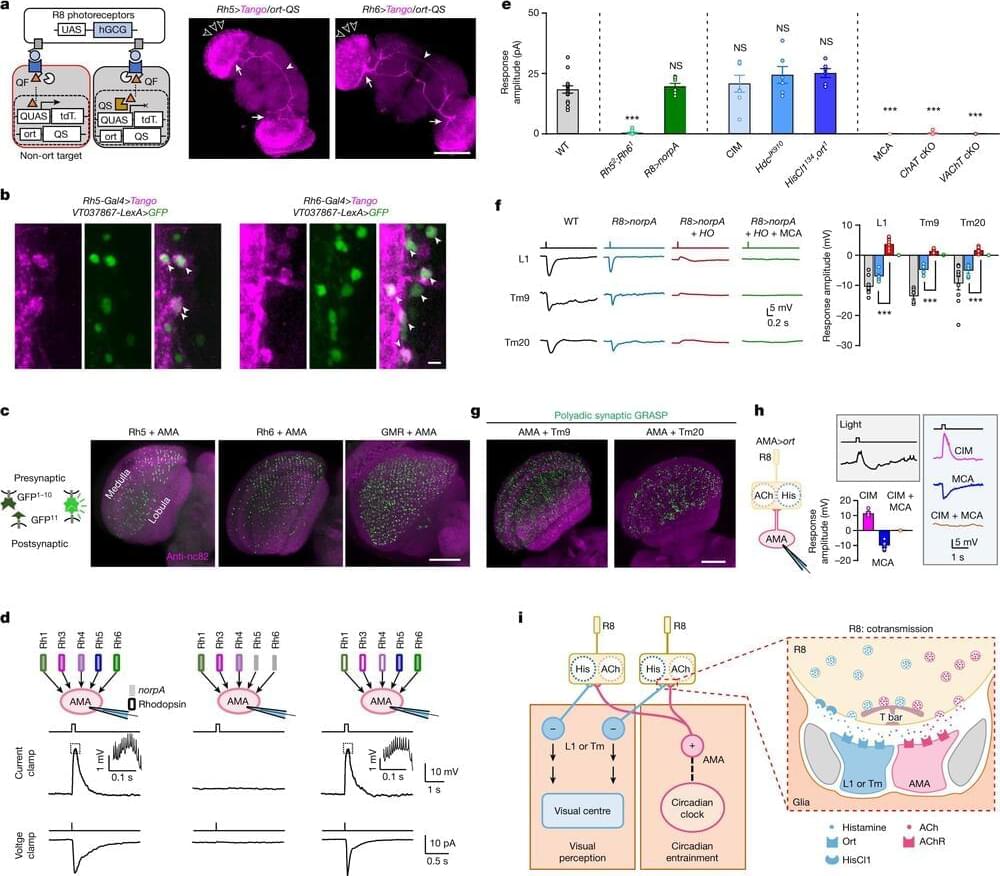Research led by Peking University, China, has discovered a single type of retinal photoreceptor cell in Drosophila (fruit fly) is involved in both visual perception and circadian photoentrainment by co-releasing histamine and acetylcholine at the first visual synapse.
In a paper, “A single photoreceptor splits perception and entrainment by cotransmission,” published in Nature, the team details the discovery that the Drosophila visual system segregates visual perception and circadian photoentrainment by co-transmitting two neurotransmitters, histamine and acetylcholine, in the R8 photoreceptor cells.
Light detection involves capturing signals through photoreceptors in the eye, which are essential for image formation and subconscious visual functions, such as regulating biological rhythms according to the daily light-dark cycle (photoentrainment of the circadian clock). The optical system has distinct pathways for image formation (based on local contrast) and non-image-related tasks (based on global irradiance).










Comments are closed.